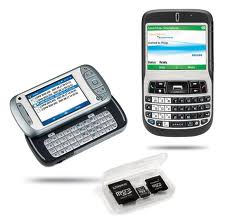Senior Vice President and General Counsel for Google Inc. has warned House Subcommittee on Intellectual Property, Competition and the Internet that even the proposed measures of fighting copyright infringement are inefficient, because even if Internet service providers blocked domains of infringing services through DNS interference, they will still be reachable via its IP address or other means like browser plug-in software.

A couple days ago the House Subcommittee on Intellectual Property, Competition and the Internet held another hearing on protecting copyright, during which the search engine giant Google provided some words of caution for legislators.
The backdrop for the event is again the controversial COICA legislation, renewed a week ago by a few Congressmen from the Senate and House Judiciary Committees. During the hearing, Kent Walker, Senior Vice President for Google, claimed that the government should aim at the worst foreign services without targeting legitimate businesses. Nevertheless, pro-copyright outfits like the MPAA and RIAA keep repeating the same nonsense about “notorious websites” and the necessity of taking action against them. In the meantime, Kent Walker argues that American current legislation is quite capable of addressing the problem of services subject to US jurisdiction, and therefore doesn’t need any further causes of action. He believes that extra enforcement tools should only be used for targeting the services residing outside the US, engaged in commercial infringement.
Besides, Google’s Senior Vice President pointed out that defining what exactly constitutes a “notorious website” isn’t that simple task, because an overbroad definition would ensnare millions of popular American sites letting users to sell products or upload material. Meanwhile, there are a lot of sites that are responsible and promptly respond to takedown notices and comply with the DMCA. Those websites shouldn’t be deemed rogue and be pursued.
Talking about using the DNS system to fight illegal activity, Google’s representative pointed out that such effort must be properly weighed against its limited efficiency and implications for core US values like innovation and fundamental freedom. In fact, when discussed, it appears that the largest real threat to US content industry that the COICA is supposed to protect is the reluctance by American rights owners to develop new innovative services the customers need so much.

A couple days ago the House Subcommittee on Intellectual Property, Competition and the Internet held another hearing on protecting copyright, during which the search engine giant Google provided some words of caution for legislators.
The backdrop for the event is again the controversial COICA legislation, renewed a week ago by a few Congressmen from the Senate and House Judiciary Committees. During the hearing, Kent Walker, Senior Vice President for Google, claimed that the government should aim at the worst foreign services without targeting legitimate businesses. Nevertheless, pro-copyright outfits like the MPAA and RIAA keep repeating the same nonsense about “notorious websites” and the necessity of taking action against them. In the meantime, Kent Walker argues that American current legislation is quite capable of addressing the problem of services subject to US jurisdiction, and therefore doesn’t need any further causes of action. He believes that extra enforcement tools should only be used for targeting the services residing outside the US, engaged in commercial infringement.
Besides, Google’s Senior Vice President pointed out that defining what exactly constitutes a “notorious website” isn’t that simple task, because an overbroad definition would ensnare millions of popular American sites letting users to sell products or upload material. Meanwhile, there are a lot of sites that are responsible and promptly respond to takedown notices and comply with the DMCA. Those websites shouldn’t be deemed rogue and be pursued.
Talking about using the DNS system to fight illegal activity, Google’s representative pointed out that such effort must be properly weighed against its limited efficiency and implications for core US values like innovation and fundamental freedom. In fact, when discussed, it appears that the largest real threat to US content industry that the COICA is supposed to protect is the reluctance by American rights owners to develop new innovative services the customers need so much.























